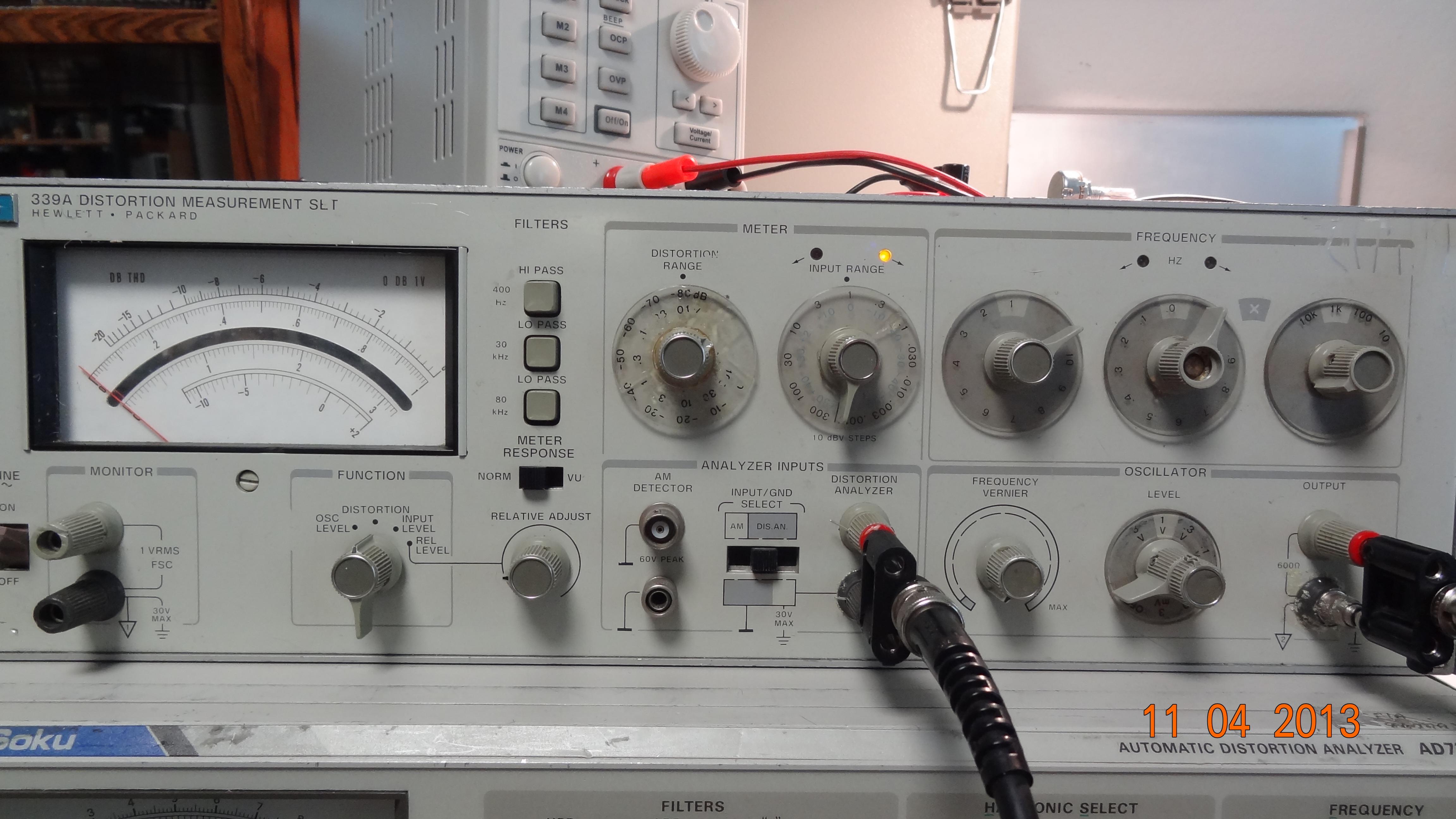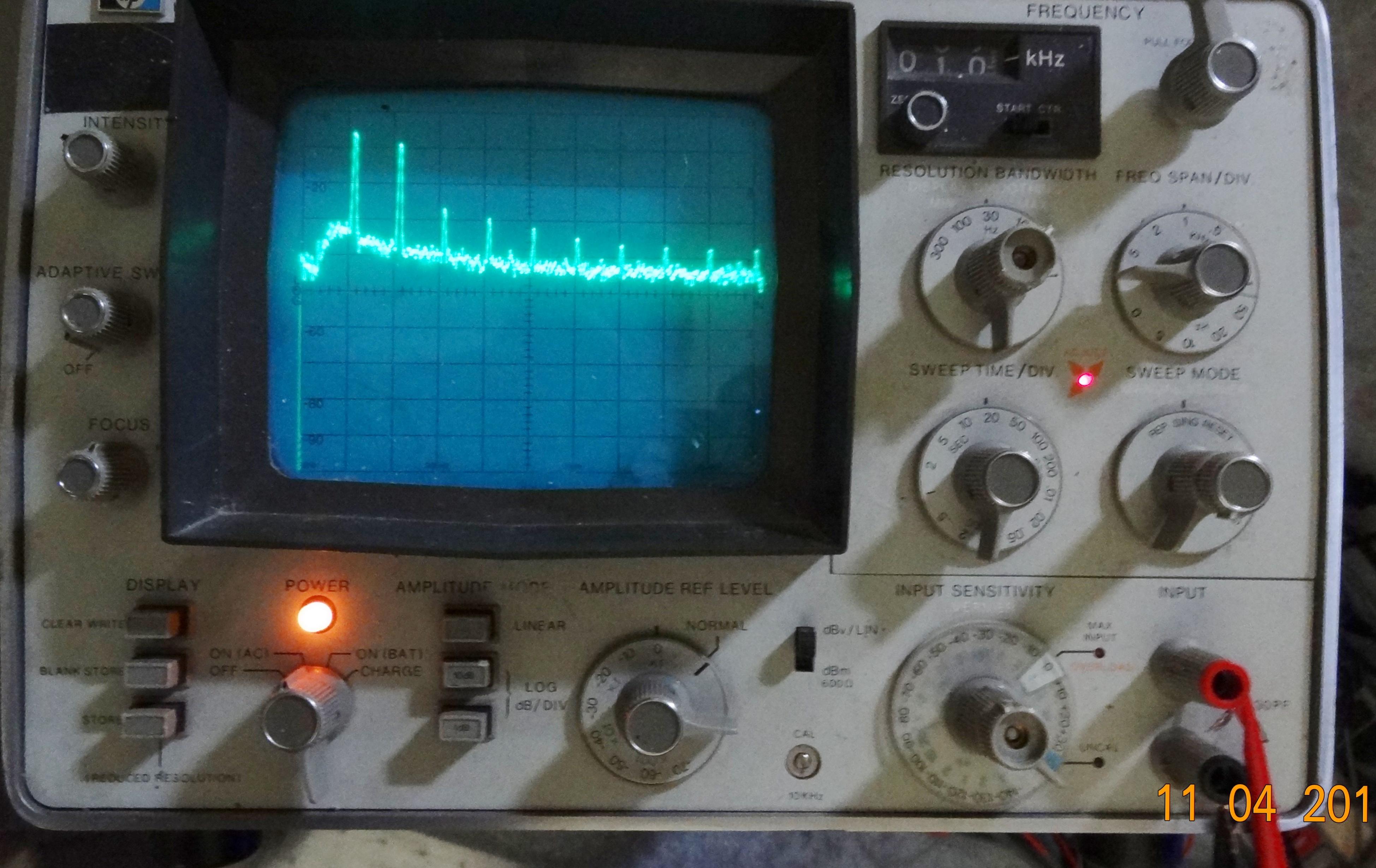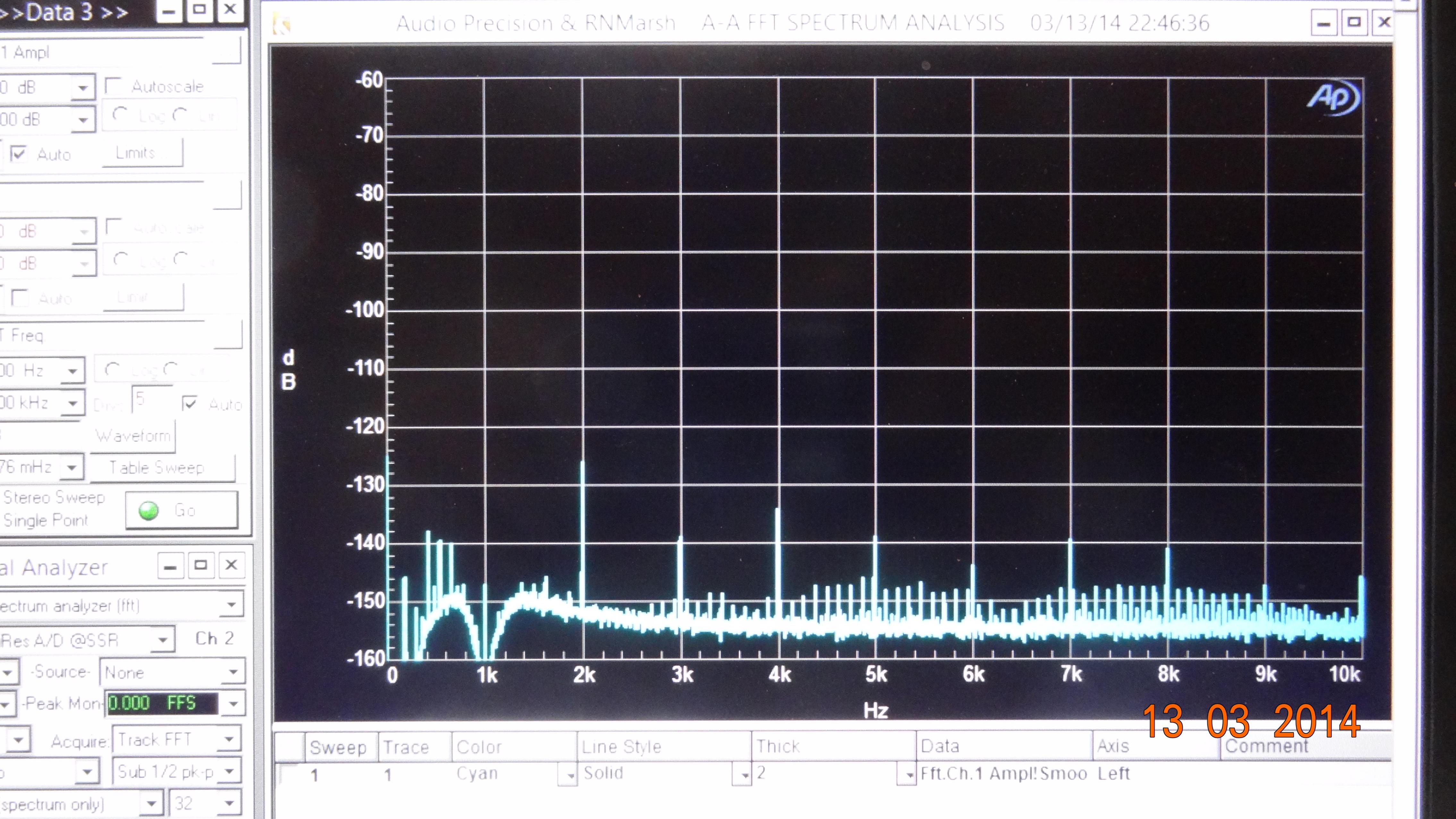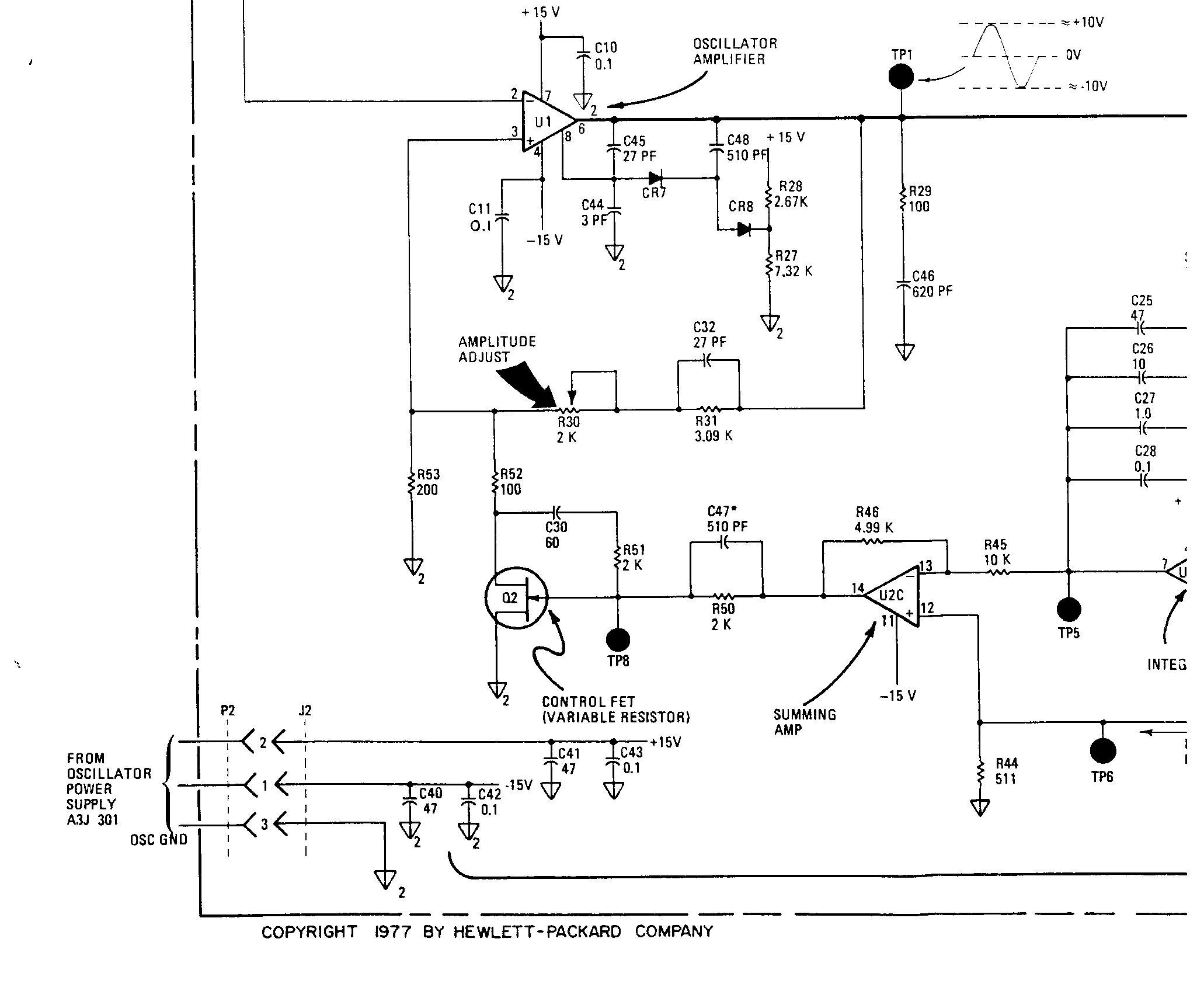[book=HP339a]%[/book]
[h=Introduction]%1[/h]
The HP339a was a state of the art distortion analyzer in the 1980s.
It was and is a full featured all-in-one product including a volt meter,
low distortion oscillator, analyzer, AM detector, and VU meter.
There was an in-depth analysis of low distortion oscillators
on DIYAudio <Low-disortion Audio-range Oscillator>
followed by the specific HP339a thread:
<HP339a>
This is a summary of those threads along with the links
and conversation, posts, etc about the research and development
that went into the suggested modifications to this analyzer.
[h=Outline]%2[/h]
[h=Why HP 339A?]%1[/h]
[h= Cheapest quality instrument for DIY mods ]%2[/h]
#1146:
The 339A is about the cheapest instrument that DIY'ers will ever be able to do simple mods to (parts, value changes and IC replacements) and get excellent results. However, next up the ladder of affordability might be the popular HP 8903_ or others? If the full potential can be realized in that one or other readily available used gear, what rewards will they bring? This little 339A excercise shows us there is a lot that can be had in refurbishing them for improved performance if the fundamental design is sound.
[h=Wide range of frequencies and input voltages]%2[/h]
#1577
-- just change the IC's and a few caps and trimmers and you are done with the mods. Then just use its' own analyzer to tune the thd with the trimmers for a null. That's about it. The nice thing about the 339A is that it has a wide range of frequencies and it can be used as an rms voltmeter with db scales. The analyzer will accept a wide range of voltages on its input. It will give you a fast indication of the thd+n with a minimum of fuss and cost less than any other options.
We here got carried away with the oscillator and have been curious as to how low can we make it can go... far lower than the THD meter/analyzer part... but an indication well under .001 (-100dB) should show that you have a pretty good amp/preamp circuit.
[h=Accepts up to 300 Vrms on attenuated input]%2[/h]
[h=Similar to Dick Moore's project ]%2[/h]
#1554
For all those thinking of using an HP339A and want to improve it:
I just looked at a similar project by Dick Moore. He copied the 339A oscillator circuit and put it into another existing chassis. Didn't use the 339A analyzer section. If you go to his site, you will get a well written, detailed summary of what to do on the oscillator. -- RNMarsh
[h=Link to Dick Moore's Lab Pages]%3[/h]
Our colleague, Dick Moore (aka RichEEM), and his mod pages w/FFT plots:
http://www.moorepage.net/IG-18-3.html
[h=Base line performance.]%1[/h]
Post #980, Low Distortion Analyzer
[h=Stock 339A Performance Numbers -]%2[/h]
Being able to have a wide range of test freq is a nice convenience.
So far the complete HP339A system -- reading its own oscillator at almost stock (osc + analyzer distortion) - with just a tune up and changing the two null trimmers (using a 3580A spect analyzer on the output monitor port of the 339A) -- gives a noise floor of -145. The H2 is -105 and the H3 -130. Its a good beginnng and its getting better! Thx-RNMarsh
Thx-RNMarsh
Intro to the 339A boards. Unmodded
1. Pic
2. Pic
3. Pic
4. Pic
5. Pic
[h=Modified HP339A Performance Numbers ]%1[/h]
[h=FFT Plots w/Test Equip #2156 on ]%2[/h]
RNMarsh - Post #2156
The 339A is a thd+N meter. The osc and analyzer spec is .0018% or better. That is a tick below the 0.2 mark on the 0-1 scale (-80dB =1).
After opamp and parts changes and upgrades, the thd+n is near the 0 mark -- well below -100dB. This is THD+N.
Using the 339A monitor output shows the two dominant harmonics at -106db and -110dB for 3H. The top is -100dB and 10dB/div. and measured with shibasoku 725D analyzer ported to an HP 3580A Spectrum Analyzer to measure individual harmonic and noise levels. This is a compromise tuning for a wide range of freqs; For minimum thd+n at only one freq, it can be much lower:


[h=Disassembly and Cleaning]%1[/h]
[h=Things to be careful about]%1[/h]
Careful when making adjustments that you don't short the case of the Jfet.
It's very close to one of the trim pots and if it shorts it's toast.
Stability Build Before Modding:
1. Testing and Replacing power supply electrolytic capacitors.
2. Other Platform stability building.
[h=Modifications]%1[/h]
Most bang for the buck and reasons go here.
Davada - Explains the HP339a configuration
and the limitations of the mods:
[h=Output Level Pot]%2[/h]
Davada - Post #48:
Davada found the output level pot to be a source of distortion. You can
find the voltage level output pot for under $10 at Mouser or other suppliers.
The pot is a Bourns cermet type, p/n 51SADU25A15L.
The output level pot is easy to change. Loosen the screws on the shaft extender and spin the nuts off. 20 min tops. The pot shaft is longer than needed so you
have to cut it to proper length about 8 to10 mm.
[h=Oscillator and Pot change ]%2[/h]
RNMarsh - Post #45, #47 (HP339a):
If you wanted to do the minimum, just changing the oscillator opamp
(AD797 etc) and replace its control pot with a new multi-turn and add
another trim for the fixed resistor that is feedback on the control jFET (d-g)
with a multi-turn (for 2H only).
But, a must do is replace the output level pot. That pot introduces a lot of harmonic distortion.
AND
Most used oscillator change:
[h=Most used oscillator change]%2[/h]
Davada - Post #75 HP339a:
The bottom of the board is completely exposed once the analyzer is opened up.
It's a bit tight from the top of the board but all your doing is inserting
components. Just remember to remove all the compensation and clamping
components around the op amp for the oscillator.
If you use an LT1468 the compensation is wrong and not needed.
There's is not much to go wrong. Just be careful when making adjustments
that you don't short the case of the Jfet. It's very close to one of the pots and if it shorts it's toast.
[h=FFT with These Mods]%2[/h]
Post #83
FFT at this point:

[h=A1 Board Oscillator Schematic]%2[/h]
Davada - Post #88 Schematic

[h=A1 Board Specific Mods]%2[/h]
RNMarsh - Post #86
[h=The jFET feedback R51/2K.]%3[/h] Replace with 28 turn pot/trimmer. It is in series with a 60mfd cap (C30)..... together they go from jFET gate to its' drain. Replace C30 with 100mfd 105c bipolar.
[h=The Oscillator Amplitude Adjust pot (R30/2K)]%3[/h] replace it as this old has contact issues and makes the adjustment difficult and 'touchy'. Replace.
[h=The output pot is R3 (10K). Replace.]%3[/h] Bournes pot above.
[h=OSC IC - A1U1 (LT1468)]%3[/h] is all you need to do to have the level of THD shown above.
[h=Notes and errata]%1[/h]
[h=Service/Test Notes ]%2 [/h]
[h= PhotoCell LED Measurement]%3[/h]
Dick Moore wrote this up to help us
test the Photocells and see if they are
still good or not. Thank you Dick, R.I.P.
Link to Post#39
Basic Mumbo Jumbo
Hocus Pokus Dominatrix
Probably up to about post #2300 is the low
distortion analyzer thread.
Start Photo before mods example
End photo after mods exemplary example
How to get there what to do.
Parts
Resources
Work arounds
Steps to get there
To do
To not do
[h=Brought to you by these fine folks at DIY Audio:]%1[/h]
[h= Davada ]%3[/h]
[h= Richiem, R.I.P. ]%3[/h]
[h= RNMarsh ]%3[/h]
[h= 1Audio ]%3[/h]
[h= et al ]%3[/h]
[h= and a cast of 10s]%3[/h]
[h= on thousands of written pages]%3[/h]
[h= Boiled down for the average Joe by SyncTronX.]%3[/h]
[h=Introduction]%1[/h]
The HP339a was a state of the art distortion analyzer in the 1980s.
It was and is a full featured all-in-one product including a volt meter,
low distortion oscillator, analyzer, AM detector, and VU meter.
There was an in-depth analysis of low distortion oscillators
on DIYAudio <Low-disortion Audio-range Oscillator>
followed by the specific HP339a thread:
<HP339a>
This is a summary of those threads along with the links
and conversation, posts, etc about the research and development
that went into the suggested modifications to this analyzer.
[h=Outline]%2[/h]
[h=Why HP 339A?]%1[/h]
[h= Cheapest quality instrument for DIY mods ]%2[/h]
#1146:
The 339A is about the cheapest instrument that DIY'ers will ever be able to do simple mods to (parts, value changes and IC replacements) and get excellent results. However, next up the ladder of affordability might be the popular HP 8903_ or others? If the full potential can be realized in that one or other readily available used gear, what rewards will they bring? This little 339A excercise shows us there is a lot that can be had in refurbishing them for improved performance if the fundamental design is sound.
[h=Wide range of frequencies and input voltages]%2[/h]
#1577
-- just change the IC's and a few caps and trimmers and you are done with the mods. Then just use its' own analyzer to tune the thd with the trimmers for a null. That's about it. The nice thing about the 339A is that it has a wide range of frequencies and it can be used as an rms voltmeter with db scales. The analyzer will accept a wide range of voltages on its input. It will give you a fast indication of the thd+n with a minimum of fuss and cost less than any other options.
We here got carried away with the oscillator and have been curious as to how low can we make it can go... far lower than the THD meter/analyzer part... but an indication well under .001 (-100dB) should show that you have a pretty good amp/preamp circuit.
[h=Accepts up to 300 Vrms on attenuated input]%2[/h]
[h=Similar to Dick Moore's project ]%2[/h]
#1554
For all those thinking of using an HP339A and want to improve it:
I just looked at a similar project by Dick Moore. He copied the 339A oscillator circuit and put it into another existing chassis. Didn't use the 339A analyzer section. If you go to his site, you will get a well written, detailed summary of what to do on the oscillator. -- RNMarsh
[h=Link to Dick Moore's Lab Pages]%3[/h]
Our colleague, Dick Moore (aka RichEEM), and his mod pages w/FFT plots:
http://www.moorepage.net/IG-18-3.html
[h=Base line performance.]%1[/h]
Post #980, Low Distortion Analyzer
[h=Stock 339A Performance Numbers -]%2[/h]
Being able to have a wide range of test freq is a nice convenience.
So far the complete HP339A system -- reading its own oscillator at almost stock (osc + analyzer distortion) - with just a tune up and changing the two null trimmers (using a 3580A spect analyzer on the output monitor port of the 339A) -- gives a noise floor of -145. The H2 is -105 and the H3 -130. Its a good beginnng and its getting better!
Intro to the 339A boards. Unmodded
1. Pic
2. Pic
3. Pic
4. Pic
5. Pic
[h=Modified HP339A Performance Numbers ]%1[/h]
[h=FFT Plots w/Test Equip #2156 on ]%2[/h]
RNMarsh - Post #2156
The 339A is a thd+N meter. The osc and analyzer spec is .0018% or better. That is a tick below the 0.2 mark on the 0-1 scale (-80dB =1).
After opamp and parts changes and upgrades, the thd+n is near the 0 mark -- well below -100dB. This is THD+N.
Using the 339A monitor output shows the two dominant harmonics at -106db and -110dB for 3H. The top is -100dB and 10dB/div. and measured with shibasoku 725D analyzer ported to an HP 3580A Spectrum Analyzer to measure individual harmonic and noise levels. This is a compromise tuning for a wide range of freqs; For minimum thd+n at only one freq, it can be much lower:


[h=Disassembly and Cleaning]%1[/h]
[h=Things to be careful about]%1[/h]
Careful when making adjustments that you don't short the case of the Jfet.
It's very close to one of the trim pots and if it shorts it's toast.
Stability Build Before Modding:
1. Testing and Replacing power supply electrolytic capacitors.
2. Other Platform stability building.
[h=Modifications]%1[/h]
Most bang for the buck and reasons go here.
Davada - Explains the HP339a configuration
and the limitations of the mods:
[h=Output Level Pot]%2[/h]
Davada - Post #48:
Davada found the output level pot to be a source of distortion. You can
find the voltage level output pot for under $10 at Mouser or other suppliers.
The pot is a Bourns cermet type, p/n 51SADU25A15L.
The output level pot is easy to change. Loosen the screws on the shaft extender and spin the nuts off. 20 min tops. The pot shaft is longer than needed so you
have to cut it to proper length about 8 to10 mm.
[h=Oscillator and Pot change ]%2[/h]
RNMarsh - Post #45, #47 (HP339a):
If you wanted to do the minimum, just changing the oscillator opamp
(AD797 etc) and replace its control pot with a new multi-turn and add
another trim for the fixed resistor that is feedback on the control jFET (d-g)
with a multi-turn (for 2H only).
But, a must do is replace the output level pot. That pot introduces a lot of harmonic distortion.
AND
Most used oscillator change:
[h=Most used oscillator change]%2[/h]
Davada - Post #75 HP339a:
The bottom of the board is completely exposed once the analyzer is opened up.
It's a bit tight from the top of the board but all your doing is inserting
components. Just remember to remove all the compensation and clamping
components around the op amp for the oscillator.
If you use an LT1468 the compensation is wrong and not needed.
There's is not much to go wrong. Just be careful when making adjustments
that you don't short the case of the Jfet. It's very close to one of the pots and if it shorts it's toast.
[h=FFT with These Mods]%2[/h]
Post #83
FFT at this point:

[h=A1 Board Oscillator Schematic]%2[/h]
Davada - Post #88 Schematic

[h=A1 Board Specific Mods]%2[/h]
RNMarsh - Post #86
[h=The jFET feedback R51/2K.]%3[/h] Replace with 28 turn pot/trimmer. It is in series with a 60mfd cap (C30)..... together they go from jFET gate to its' drain. Replace C30 with 100mfd 105c bipolar.
[h=The Oscillator Amplitude Adjust pot (R30/2K)]%3[/h] replace it as this old has contact issues and makes the adjustment difficult and 'touchy'. Replace.
[h=The output pot is R3 (10K). Replace.]%3[/h] Bournes pot above.
[h=OSC IC - A1U1 (LT1468)]%3[/h] is all you need to do to have the level of THD shown above.
[h=Notes and errata]%1[/h]
[h=Service/Test Notes ]%2 [/h]
[h= PhotoCell LED Measurement]%3[/h]
Dick Moore wrote this up to help us
test the Photocells and see if they are
still good or not. Thank you Dick, R.I.P.
Link to Post#39
Basic Mumbo Jumbo
Hocus Pokus Dominatrix
Probably up to about post #2300 is the low
distortion analyzer thread.
Start Photo before mods example
End photo after mods exemplary example
How to get there what to do.
Parts
Resources
Work arounds
Steps to get there
To do
To not do
[h=Brought to you by these fine folks at DIY Audio:]%1[/h]
[h= Davada ]%3[/h]
[h= Richiem, R.I.P. ]%3[/h]
[h= RNMarsh ]%3[/h]
[h= 1Audio ]%3[/h]
[h= et al ]%3[/h]
[h= and a cast of 10s]%3[/h]
[h= on thousands of written pages]%3[/h]
[h= Boiled down for the average Joe by SyncTronX.]%3[/h]
I replaced U1 with an AD797ANZ and I get .05% THD
is there something that I need to adjust or compensate for?
Please feel free to post a comment or a link here. This is for everyone.
If you have an Idea or something to share about the HP339A...there was
a lot of discussion about.
is there something that I need to adjust or compensate for?
- Home
- diyaudio.com Wiki
- HP339a Modification Summary